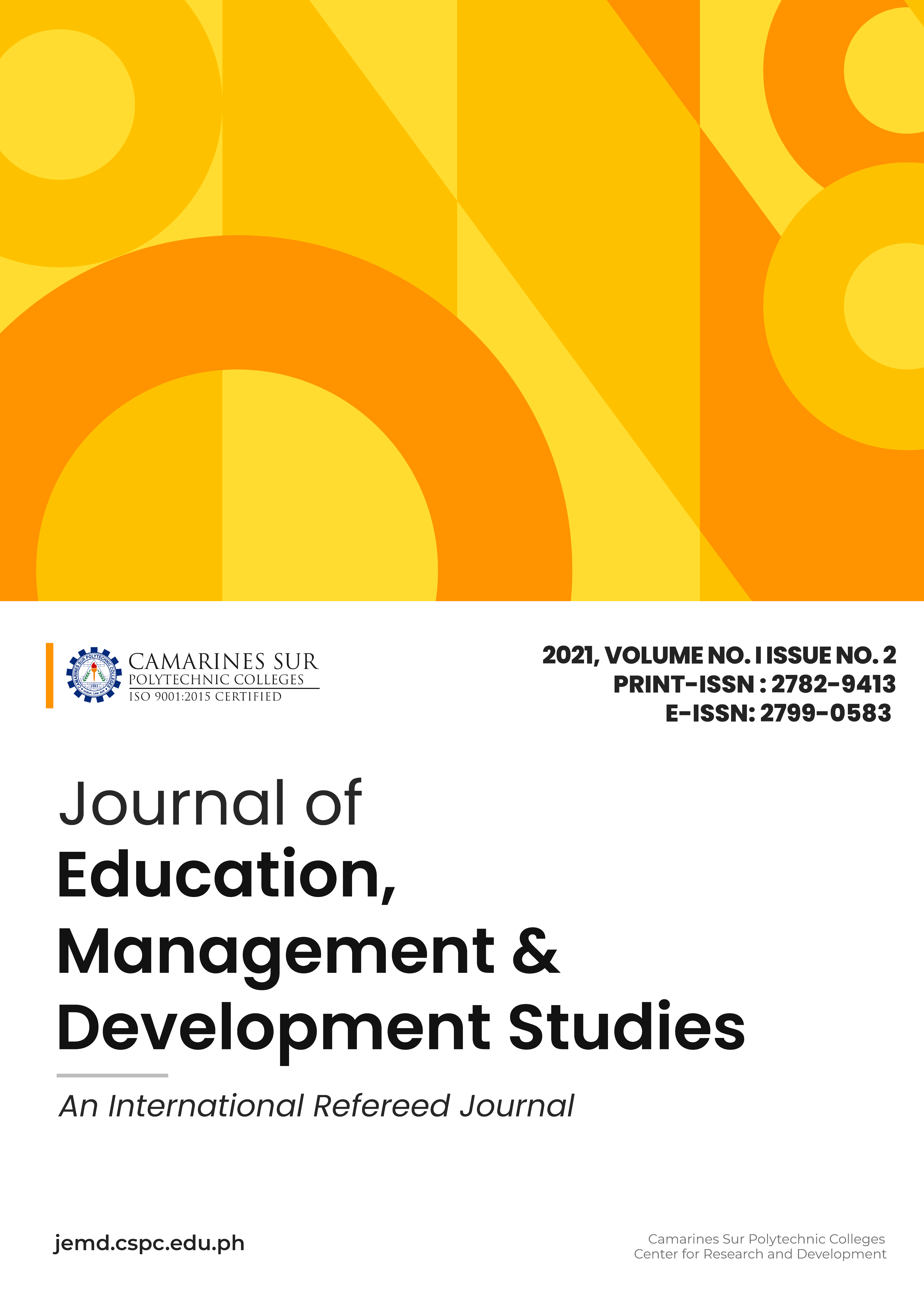Abstract
This paper explores possible scenarios for the Research Culture of Camarines Sur Polytechnic Colleges (CSPC), to be known as Polytechnic State University of Bicol (PSUB). The paper utilized Jim Dator’s four archetypes of alternative futures to construct PSUB’s Research Culture possible scenarios by 2030. This paper highlights the assumption that the research culture in PSUB is of world class quality and all of its faculty members are actively involved in research, its disciplined, collapsed, transformative, or business as usual scenarios. Four plausible scenarios have surfaced in this paper: Progressive Research Culture, Lax and Deficit Research Culture, Sophisticated Research Culture, and Transformative Research Culture. The article explored areas for a preferred future by 2030. It requires multiple drivers along faculty, students, administration and community for a better research culture. This study proved to be useful in crafting and anticipating the future scenarios of PSUB’s research culture. Preliminary as it may, this study highlighted important building blocks of the four future scenarios. Dator’s framework was proved to be very useful in developing the four scenarios, the use of other future study tools will further amplify plausible scenarios for the Polytechnic State University of Bicol.
References
Cannon, A. (2016). Five Trends Driving Change in Research for Development. Retrieved from http://www.sustainablescientists.org/five-trends-driving-change-in-research-for-development/
Canvas. (n.d.). Four Futures. Retrieved from https://canvas.uts.edu.au/courses/1276/pages/four-futures
Cororaton, C. B. (2002). Research and development and technology in the philippines (PIDS Discussion Paper Series No. 2002-23). Makati City. Retrieved from http://hdl.handle.net/10419/127803
Dator, J. (2009). Alternative Futures at the Manoa School. Journal of Futures Studies, 14(2), 1–18. Retrieved 2021-09-19, from https://jfsdigital.org/articles-and-essays/2009-2/vol-14-no-2-november/articles/futuristsalternative-futures-at-the-manoa-school/
Hirono, R. (1985). Chapter 12: Improving productivity through macro-micro linkage. Tokyo: Asian Productivity Organization. In Macro-micro linkages for productivity improvement through technological innovations: case of Japan. Tokyo: Asian Productivity Organization.
Karlin, L. (2019). Welcome – Research Culture. Shift Learning. Retrieved from https://wellcome.org/sites/default/files/research-culture-literature-review.pdf
Repko, A. F. (2011). Chapter 2. Mapping the Drivers of Interdisciplinarity. In Interdisciplinary Research Process and Theory (2nd ed.). SAGE Publications, Inc.
Tecson-Mendoza, E. M. (2015, August). Scientific and academic journals in the Philippines: status and challenges. Science Editing, 2(2), 73–78. Retrieved 2021-09-19, from http://escienceediting.org/journal/view.php?doi=10.6087/kcse.47 doi: 10.6087/kcse.47
Teichler, U., & Sadlack, J. (2000). Higher Education Research: Its Relationship to Policy and Practice. Issues in Higher Education Series. Elsevier Science, 655 Avenue of the Americas, New York, NY, 10010-5107 ($95).
The ASEAN Post Team. (2020). Are higher education rankings important? Retrieved 2021-09-19, from https://theaseanpost.com/article/are-higher-education-rankings-important
Wittmayer, J., Hölscher, K., Wunder, S., & Veenhoff, S. (2018). Transformation research Exploring methods for an emerging research field. Federal Environment Agency.
World Conference on Higher Education. (1998). World Declaration on Higher Education for the 21st Century: Vision and Action. Paris: UNESCO.

This work is licensed under a Creative Commons Attribution-NonCommercial-NoDerivatives 4.0 International License.
Copyright (c) 2021 Journal of Education, Management and Development Studies





